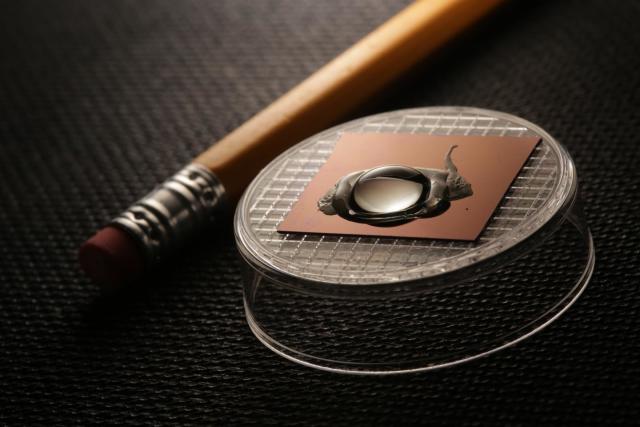DNA mutation detection is no more a tedious and time consuming task. The recently developed electrical graphene chip optimizes not only time but cost and equipment as well. The chip comes with a graphene field effect transistor that comes with a DNA probe. The helix shaped double-stranded DNA consists of a sequence coding that has been formulated to detect RNA or DNA with special single nucleotide mutation. Whenever, a specific type of RNA or DNA binds itself with the probe, the system generates an electrical signal.
The probe is joined by a “normal” DNA strand which, in return, is attached with a weaker strand. The weak strand comes with four G’s in its coding sequence that gets replaced by inosines that weakens its bond with huge impact. The two strands, in unison, create a double helix structure that works as a DNA strand displacement. Any DNA strand that complements the normal strand perfectly binds with the regular strand instantly while the weak strand is discarded off. Since, the DNA probe has been in connection with the graphene transistor, the chip operates in an electronic manner. Any changes or modifications are finally transmitted to the mobile device with the help of signal.

The double-helix shaped probe is preferred over others because it offers more selectivity over other n single-stranded ones. The weak DNA strand can only be displaced by that DNA strand that matches the regular strand in a flawless manner. The probe will survive longer because of its double stranded structure. This allows the chip to check lengthier DNA segments for any kind of mutation. Higher the length of the probe better is the certainty of uniqueness of DNA sequence in genome.
The newly developed biosensor chip presents a completely new method for detection of most commonly occurring genetic mutations such as SNP (Single Nucleotide Polymorphism). SNP happens to be a mutation in an individual nucleotide base in human DNA sequence. There are a number of SNPs that are closely associated with neurodegenerative disorders, diabetes, cancer, and several other severe pathological conditions. In short, this technology can be implied for finding solutions to a number of medical problems. It can also help in screening of several fatal diseases like cancer, monitoring bookmarkers for several diseases, as well as real time detection of microbial and viral sequences. The next phase of this project aims addition of wireless feature in the test. The team responsible for a development is that of few bioengineers from University of California located in San Diego.
Filed Under: News


Questions related to this article?
👉Ask and discuss on EDAboard.com and Electro-Tech-Online.com forums.
Tell Us What You Think!!
You must be logged in to post a comment.